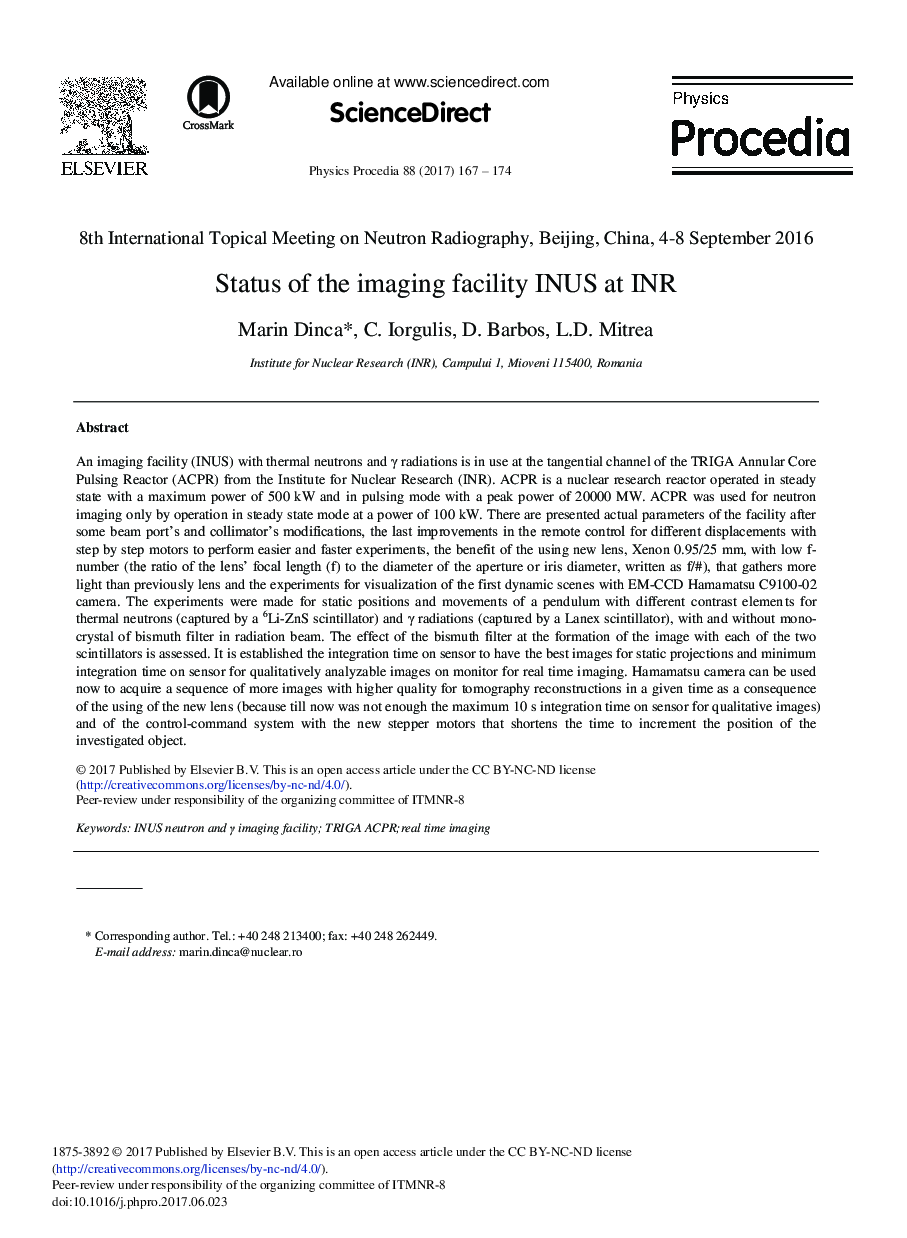| Article ID | Journal | Published Year | Pages | File Type |
|---|---|---|---|---|
| 5497203 | Physics Procedia | 2017 | 8 Pages |
Abstract
An imaging facility (INUS) with thermal neutrons and γ radiations is in use at the tangential channel of the TRIGA Annular Core Pulsing Reactor (ACPR) from the Institute for Nuclear Research (INR). ACPR is a nuclear research reactor operated in steady state with a maximum power of 500 kW and in pulsing mode with a peak power of 20000 MW. ACPR was used for neutron imaging only by operation in steady state mode at a power of 100 kW. There are presented actual parameters of the facility after some beam port's and collimator's modifications, the last improvements in the remote control for different displacements with step by step motors to perform easier and faster experiments, the benefit of the using new lens, Xenon 0.95/25 mm, with low f-number (the ratio of the lens' focal length (f) to the diameter of the aperture or iris diameter, written as f/#), that gathers more light than previously lens and the experiments for visualization of the first dynamic scenes with EM-CCD Hamamatsu C9100-02 camera. The experiments were made for static positions and movements of a pendulum with different contrast elements for thermal neutrons (captured by a 6Li-ZnS scintillator) and γ radiations (captured by a Lanex scintillator), with and without mono-crystal of bismuth filter in radiation beam. The effect of the bismuth filter at the formation of the image with each of the two scintillators is assessed. It is established the integration time on sensor to have the best images for static projections and minimum integration time on sensor for qualitatively analyzable images on monitor for real time imaging. Hamamatsu camera can be used now to acquire a sequence of more images with higher quality for tomography reconstructions in a given time as a consequence of the using of the new lens (because till now was not enough the maximum 10 s integration time on sensor for qualitative images) and of the control-command system with the new stepper motors that shortens the time to increment the position of the investigated object.
Keywords
Related Topics
Physical Sciences and Engineering
Physics and Astronomy
Physics and Astronomy (General)
Authors
Marin Dinca, C. Iorgulis, D. Barbos, L.D. Mitrea,
